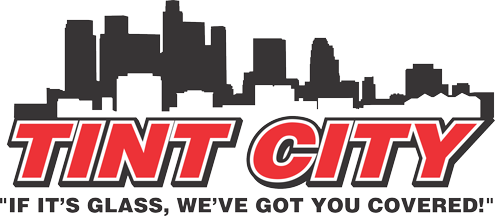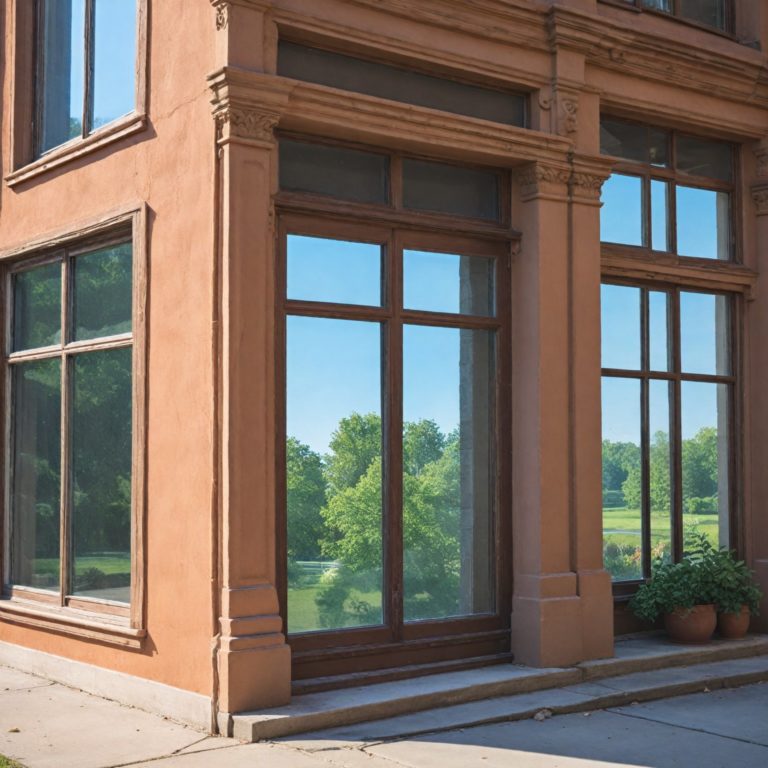The Comprehensive Guide to Window Tinting: Benefits, Types, Regulations, and Maintenance
In today’s world, window tinting has become more than just a luxury; it’s a practical solution with a multitude of benefits. Whether it’s for automotive, residential, or commercial applications, window tinting offers advantages ranging from UV protection to enhanced privacy. In this comprehensive guide, we’ll delve into the various aspects of window tinting, exploring its benefits, different types of tint films, regulations, maintenance tips, and even its environmental impact.

Benefits of Window Tinting
Window tinting offers a plethora of advantages that go beyond just aesthetics. Let’s explore some of the key benefits:
UV Protection: Window tint films act as a barrier against harmful UV rays, protecting your skin and eyes from damage and reducing the risk of skin cancer.
Heat Reduction: Tinted windows help in keeping the interior of your vehicle or building cooler by blocking a significant portion of solar heat, thus reducing the need for excessive air conditioning.
Glare Reduction: Glare from the sun or headlights can be a major distraction and even a safety hazard while driving or working. Window tinting minimizes glare, providing a more comfortable environment.
Increased Privacy: Tinted windows offer enhanced privacy by limiting the visibility from the outside, preventing prying eyes from peering into your personal space.
Types of Window Tint Film
When it comes to window tint films, there are several options available, each with its own set of features and benefits:
Dyed Film: Dyed window tinting is one of the most affordable options and offers good UV protection. However, it may fade over time and is less effective at blocking heat compared to other types.
Metalized Film: Metalized tinting incorporates tiny metallic particles to reflect heat away from the window, providing excellent heat rejection and durability. It also adds a subtle mirrored appearance to the windows.
Carbon Film: Carbon window tinting is known for its superior heat rejection capabilities and color stability. It doesn’t contain any metal, so it won’t interfere with electronic devices.
Ceramic Film: Ceramic tinting is the top-of-the-line option, offering unparalleled heat rejection, UV protection, and clarity. It’s also non-conductive, making it suitable for vehicles with built-in antennas or GPS systems.
Hybrid Film: Hybrid tint films combine elements of different types, offering a balance of performance and affordability. They provide decent heat and UV protection without breaking the bank.
Automotive Window Tinting Regulations
Before getting your car windows tinted, it’s crucial to familiarize yourself with the local regulations to ensure compliance. Regulations regarding tint darkness, reflection, and placement vary from state to state and country to country. Generally, automotive window tinting laws specify permissible tint levels measured in terms of Visible Light Transmission (VLT) percentage. Violating these regulations can result in fines or even vehicle inspections.
Residential Window Tinting Options
For residential properties, window tinting offers various options tailored to different needs:
Aesthetics: Tinted windows can enhance the appearance of your home, giving it a sleek and modern look.
Energy Efficiency: Tinted windows help in reducing heat gain during summers and heat loss during winters, leading to lower energy bills.
Privacy: Tinted windows provide privacy without compromising natural light, allowing you to enjoy both solitude and sunlight.
Commercial Window Tinting Solutions
Commercial buildings stand to benefit greatly from window tinting:
Energy Efficiency: Tinted windows can significantly reduce cooling costs by blocking solar heat, thus creating a more comfortable indoor environment for employees and customers.
Glare Reduction: Glare can be a major issue in office settings, affecting productivity and comfort. Tinted windows minimize glare, allowing for better concentration and efficiency.
Enhanced Security: Security window films can reinforce glass windows, making them more resistant to break-ins, vandalism, and even natural disasters like hurricanes.
Heat Rejection Performance of Window Tint
Different types of window tint films offer varying degrees of heat rejection:
Dyed Film: Offers moderate heat rejection but may not be as effective as other types in blocking solar heat.
Metalized Film: Provides excellent heat rejection by reflecting a significant portion of solar heat away from the window.
Carbon Film: Known for its superior heat rejection capabilities, carbon tinting keeps your interior cooler even in scorching temperatures.
Ceramic Film: Offers the highest level of heat rejection while maintaining clarity and visibility. It’s the ideal choice for hot climates or for those seeking maximum comfort.
UV Protection and Window Tinting
UV protection is one of the most significant benefits of window tinting:
Automotive Applications: Tinted windows help in blocking harmful UV rays, protecting your skin and reducing the risk of interior fading and damage.
Architectural Applications: In residential and commercial buildings, window tinting provides UV protection for furnishings, flooring, and artwork, prolonging their lifespan and maintaining their aesthetic appeal.
Window Tint Maintenance Tips
Proper maintenance is essential to prolonging the lifespan and effectiveness of window tint:
Regular Cleaning: Use a mild soap solution and a soft cloth to clean tinted windows regularly, avoiding abrasive cleaners or rough sponges that could scratch the film.
Avoiding Harsh Chemicals: Refrain from using ammonia-based cleaners or abrasive materials, as they can damage the tint film and cause it to degrade over time.
Gentle Handling: Be careful when rolling down tinted windows, especially in the first few days after installation, to prevent peeling or bubbling.
Professional Inspection: Periodically have your tinted windows inspected by professionals to ensure that they’re in good condition and free from any defects or damage.
Custom Window Tint Designs
Custom window tint designs offer endless possibilities for personalization:
Decorative Films: Add flair to your windows with decorative films featuring patterns, textures, or designs that complement your aesthetic preferences.
Branding Options: For commercial applications, custom window tinting can incorporate logos, slogans, or branding elements to enhance visibility and promote your business.
Privacy Solutions: Custom tint designs can be tailored to provide specific levels of privacy while still allowing natural light to filter through, creating a welcoming and secure environment.
Environmental Benefits of Window Tinting
Window tinting contributes to environmental sustainability in several ways:
Energy Conservation: By reducing the need for excessive air conditioning, window tinting helps in conserving energy and lowering carbon emissions, thus mitigating the impact of climate change.
Sustainable Practices: Tinted windows are a sustainable alternative to traditional window treatments, offering long-term energy savings and reducing the reliance on artificial lighting and heating.
Resource Efficiency: Window tinting films are manufactured using advanced technologies and materials that prioritize resource efficiency and minimize environmental impact.
In conclusion, window tinting offers a myriad of benefits across various applications, from automotive to residential and commercial. By understanding the different types of tint films, regulations, maintenance tips, and environmental implications, consumers can make informed decisions and reap the rewards of this versatile solution for years to come. Whether it’s protecting against UV rays, enhancing privacy, or improving energy efficiency,




